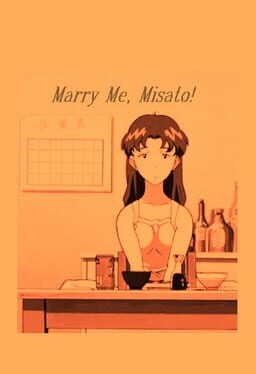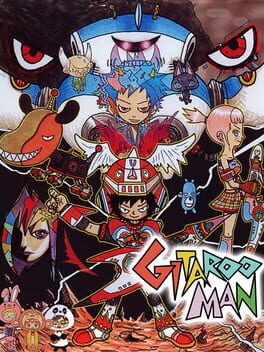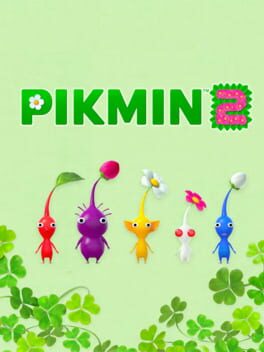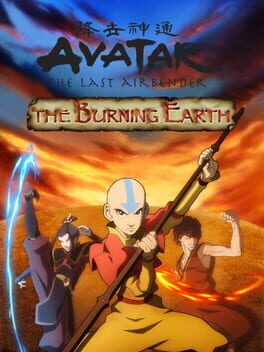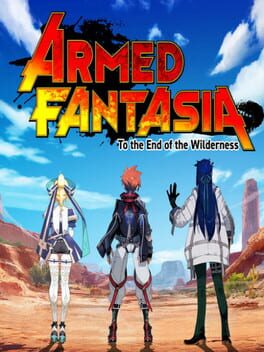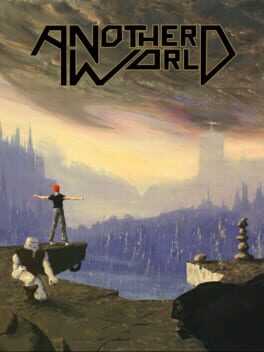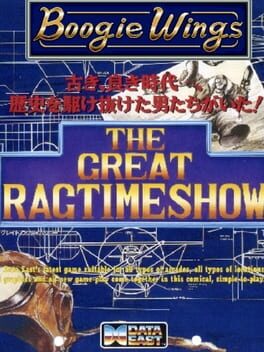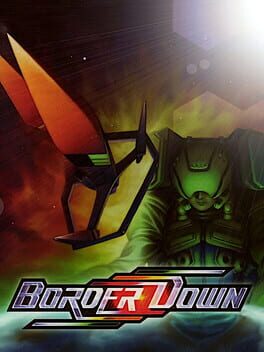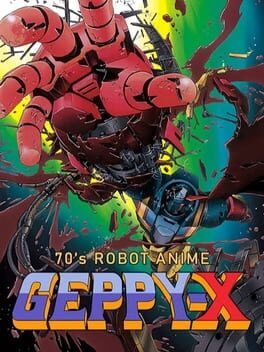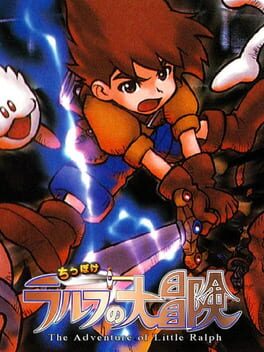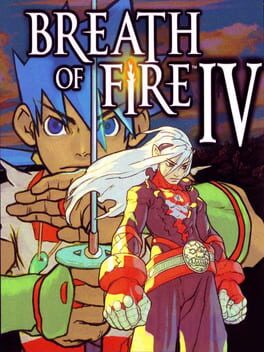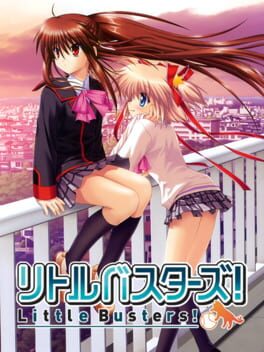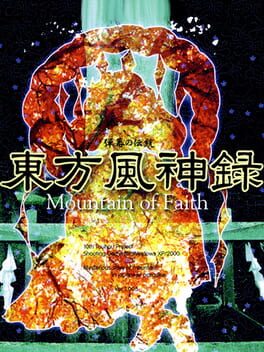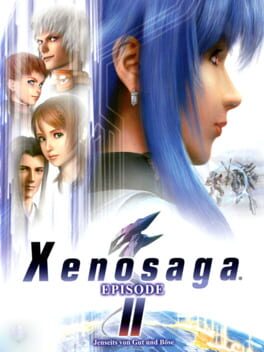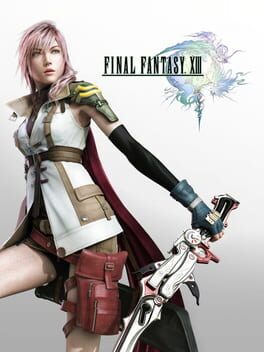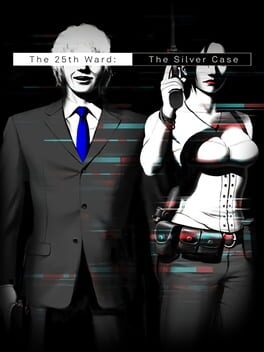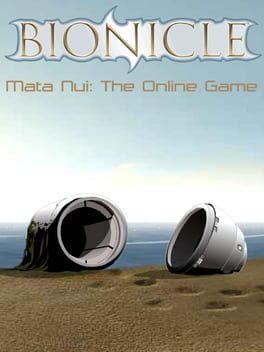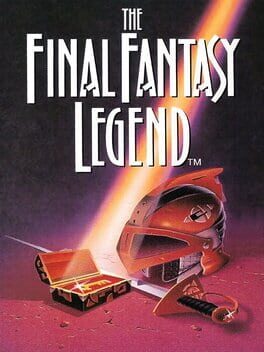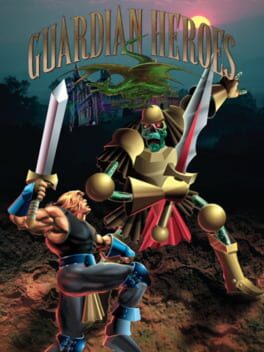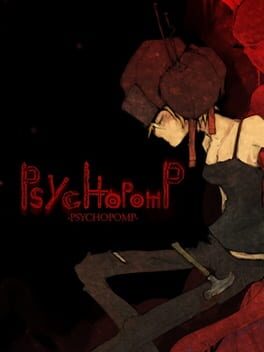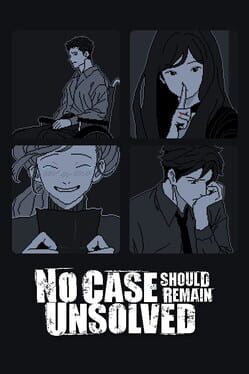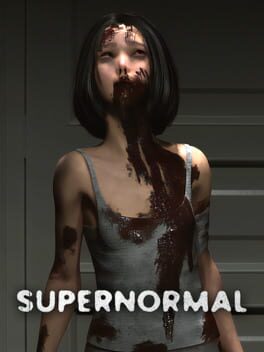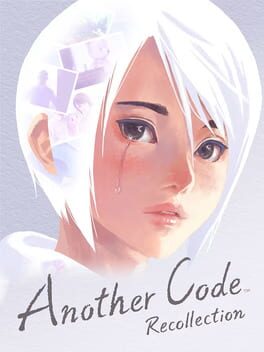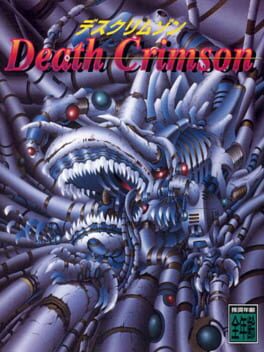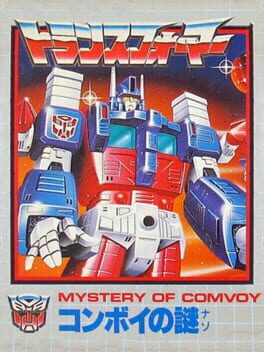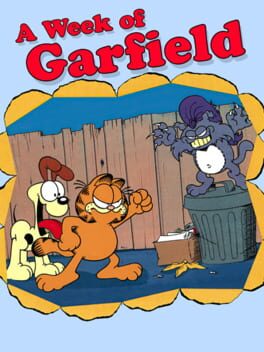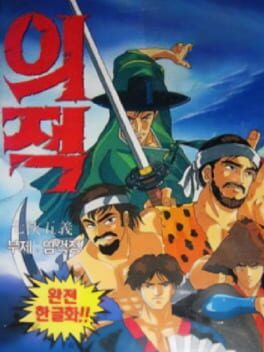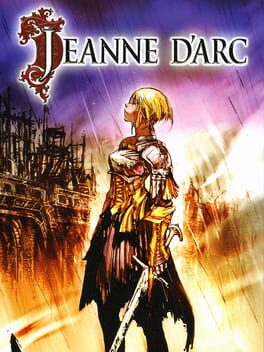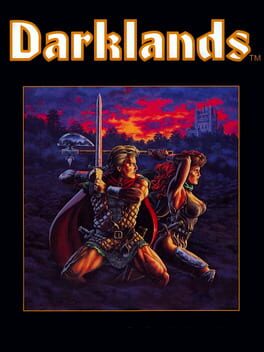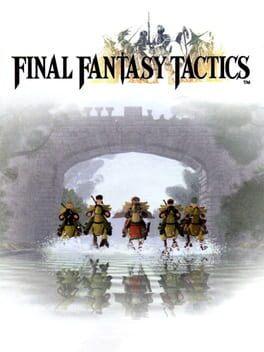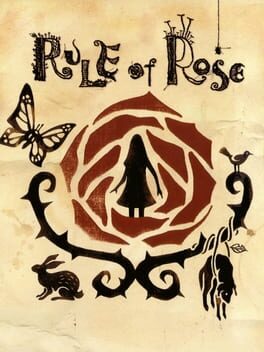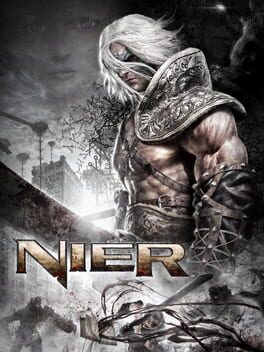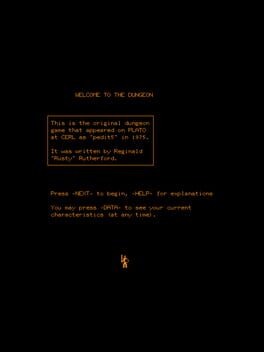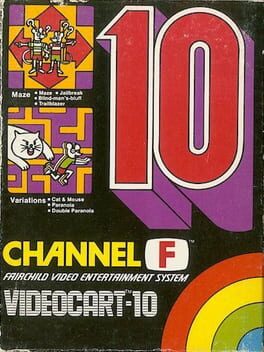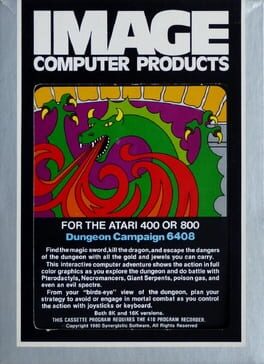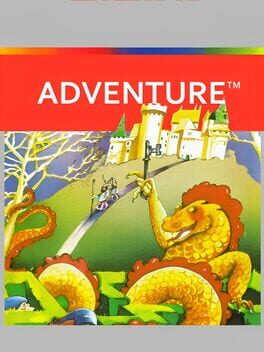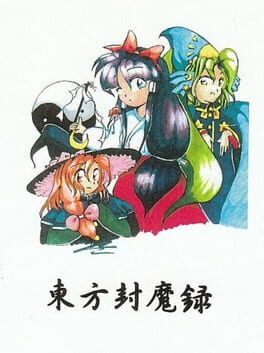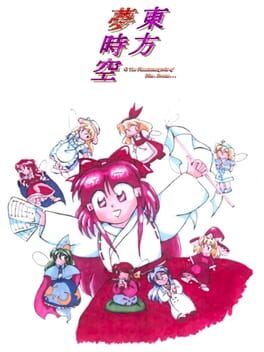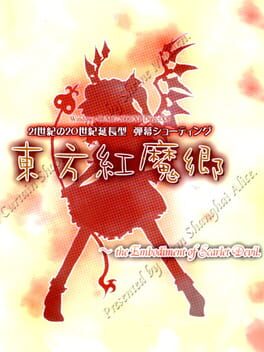eternalyn
91 reviews liked by eternalyn
Marry Me, Misato!
2005
Pikmin 4
2023
I have been in love with the Pikmin series since day one, being absolutely glued to the screen trying to help Olimar find all his ship pieces, which turned into finding treasure pieces for the Boss, and eventually into various fruits for a dying Koppai planet. I was pretty satisfied with the Pikmin series ending at 3, but I know the online community was especially loud about wanting a 4th one, and to be honest, I was a little curious where they would go with the series after 3, so hey, why not check it out?
I went in fully knowing that this era of Nintendo is no longer what I loved growing up with, but I still wanted to go in with an open mind, and hopefully be happy to find it keeping to its core. But after finishing the game, I couldn’t help but feel unsatisfied and just very… odd about the whole experience. Pikmin 4 isn’t bad, especially compared to other games on the Switch, Pikmin 4 is actually quite good in comparison! But after thinking about it for a little bit, I think I can sum up why I wasn’t quite as happy with Pikmin 4 as I was in the past Pikmin games.
Assistance
Pikmin 4 is too kind to you, so kind in fact, that it takes away the original enjoyment I had with the game. Pikmin 1 & 2, and Pikmin 3 on the Wii U all are games that create an environment with a mission that you need to complete, sounds easy enough, right? Well, no. The whole point of Pikmin is to complete your goal with literally EVERYTHING in the world out against you. It’s you, this tiny little man not even the height of a GameCube disc, and your funny little fellas, out against literally EVERYTHING. Pikmin started as a series called Adam & Eve where you had to control an eventual 100-person tribe of people with their own freewill and get them to complete tasks for you. You were essentially supposed to play God, with your little people as your followers.
I see SO many people complain about how it seems like the pikmin in Pikmin 1 are completely braindead or go against your wishes in order to jump into the water, fall off bridges/ledges, or run right into fire walls, and I can not stress this enough; That. Is. The. Goddamn. POINT. The Pikmin are supposed to be annoying, they’re supposed to go against your wishes, because to put it bluntly, Olimar is finding these creatures and making them into his blooming slaves. They follow Olimar because of the light on his helmet, but in the end, they still have their own wants and desires, and THAT is what makes Pikmin an incredibly amazing and insanely unique game never before seen. It’s a game where you have to fight against nature WITH nature in order to complete your goal.
What Pikmin 4 does that ended up taking the enjoyment away from me was that instead of making it a game of nature fighting AGAINST you, it’s now a game of puzzles that helps GIVE you that push towards completing your goal. Gone is that challenge. Gone is that struggle. Instead, you can rest easy in knowing the game will help you in any way it possibly can. The base is too far, making carrying items back difficult from environmental aspects (water, walls, unbuilt bridges, etc) or there being too many enemies no longer an issue, you can just move the base now. The fear of losing your Pikmin and being low on a certain type is gone, as Oatchi, as undeniably cute as he is, can be trained to withstand any elemental obstacle (minus poison), and can be trained to be as strong as 100 Pikmin to boot! He is a built-in, mandatory handicap to the entire game’s mechanic.
There are other things to critique and there are lots of things to admire, but this review is already long enough, and it’s really not that important. Overall, I would say Pikmin 4 is a good game in the sense that it does what it set out to do, and also seems to have fixed certain aspects that made the game more playable for a wider ranged audience, which I can’t have any serious vendetta against. It’s no longer the game series that I originally fell in love with, but that doesn’t mean I’m upset at people who could never get into the old games and find joy in Pikmin 4, in fact, I feel the exact opposite. I’m very happy to see so many people so passionate and happy about it in a way I felt about the original game, and ultimately, that’s what is most important to me.
P.S. If I was Olimar, I would just kill Louie at this point.
I went in fully knowing that this era of Nintendo is no longer what I loved growing up with, but I still wanted to go in with an open mind, and hopefully be happy to find it keeping to its core. But after finishing the game, I couldn’t help but feel unsatisfied and just very… odd about the whole experience. Pikmin 4 isn’t bad, especially compared to other games on the Switch, Pikmin 4 is actually quite good in comparison! But after thinking about it for a little bit, I think I can sum up why I wasn’t quite as happy with Pikmin 4 as I was in the past Pikmin games.
Assistance
Pikmin 4 is too kind to you, so kind in fact, that it takes away the original enjoyment I had with the game. Pikmin 1 & 2, and Pikmin 3 on the Wii U all are games that create an environment with a mission that you need to complete, sounds easy enough, right? Well, no. The whole point of Pikmin is to complete your goal with literally EVERYTHING in the world out against you. It’s you, this tiny little man not even the height of a GameCube disc, and your funny little fellas, out against literally EVERYTHING. Pikmin started as a series called Adam & Eve where you had to control an eventual 100-person tribe of people with their own freewill and get them to complete tasks for you. You were essentially supposed to play God, with your little people as your followers.
I see SO many people complain about how it seems like the pikmin in Pikmin 1 are completely braindead or go against your wishes in order to jump into the water, fall off bridges/ledges, or run right into fire walls, and I can not stress this enough; That. Is. The. Goddamn. POINT. The Pikmin are supposed to be annoying, they’re supposed to go against your wishes, because to put it bluntly, Olimar is finding these creatures and making them into his blooming slaves. They follow Olimar because of the light on his helmet, but in the end, they still have their own wants and desires, and THAT is what makes Pikmin an incredibly amazing and insanely unique game never before seen. It’s a game where you have to fight against nature WITH nature in order to complete your goal.
What Pikmin 4 does that ended up taking the enjoyment away from me was that instead of making it a game of nature fighting AGAINST you, it’s now a game of puzzles that helps GIVE you that push towards completing your goal. Gone is that challenge. Gone is that struggle. Instead, you can rest easy in knowing the game will help you in any way it possibly can. The base is too far, making carrying items back difficult from environmental aspects (water, walls, unbuilt bridges, etc) or there being too many enemies no longer an issue, you can just move the base now. The fear of losing your Pikmin and being low on a certain type is gone, as Oatchi, as undeniably cute as he is, can be trained to withstand any elemental obstacle (minus poison), and can be trained to be as strong as 100 Pikmin to boot! He is a built-in, mandatory handicap to the entire game’s mechanic.
There are other things to critique and there are lots of things to admire, but this review is already long enough, and it’s really not that important. Overall, I would say Pikmin 4 is a good game in the sense that it does what it set out to do, and also seems to have fixed certain aspects that made the game more playable for a wider ranged audience, which I can’t have any serious vendetta against. It’s no longer the game series that I originally fell in love with, but that doesn’t mean I’m upset at people who could never get into the old games and find joy in Pikmin 4, in fact, I feel the exact opposite. I’m very happy to see so many people so passionate and happy about it in a way I felt about the original game, and ultimately, that’s what is most important to me.
P.S. If I was Olimar, I would just kill Louie at this point.
Gitaroo Man
2001
They will never make a better rhythm game than Gitaroo Man
INFINITY==================
Not in a hundred-million years!
===============IMPOSSIBLE
When I've been away from Gitaroo Man, I always have a tentative worry. Does it still hold its power? Have I lost it? By the end of Flyin' To Your Heart, I'm back in. I am the True Gitaroo Man. "We've forgotten this sound for so long!"
Gitaroo Man seems self-aware in a way that its contemporaries don't. I don't just mean in its fun, jokey tone. It knows how to be an hour-long game. Each level presents a new storybeat, and a distinctive musical genre in this shonen anime fairytale musical, introducing enough to keep each idea fun and peppy without ever detailing anything too deeply. It's bright, exciting and fantastical, and that brief running time is the key to so much of that.
The thing that draws you in is how good the music is. It's proper game music. So often, I'll play a music game, and feel let down over how little thought was put into the music. They're often either not very musical, or negligent of how they'll feel to play. Gitaroo Man's music is brilliantly structured for gameplay, with distinct phrases for the moments they're complementing, and the whole thing's so inherently videogamey. Levels are split up into CHARGE, ATTACK, DEFEND and ENDING phases, with the music working so well to convey the drama of each section. Charge sequences have you building your life bar, calmly gaining strength through long, sustained notes. Defend stages have you dodging vicious staccato attacks, that come in the form of rapid button prompts that zoom in from each side of the screen. Attack and Ending phases are the catharsis, with you taking revenge, sustaining long notes to do maximum damage, but if you miss any entirely, that's a knock against you. You've got big Street Fighter life bars at the top of the screen. I don't think there's any piece of imagery you could conjure that could so effectively illustrate the nature of a battle to videogame players. The gameplay mainly takes the form of following "trace lines", which are big bendy lines that converge onto the centre of the screen. You have to react to each one, right on the beat, and follow their bends with the direction of the analogue stick. Bending guitar notes swoop and curve around the screen, in synchronisation with the music, and when you're playing well, you feel like you're nailing a solo, trying your best to resist making Steve Vai faces. It's a similar system to Keiichi Yano's later Ouendan and Elite Beat Agents games, but it feels so much more aggressive with all of the prompts zooming into the middle of the screen. It's combat, it's war!
There's a crucial hook to the game, and something that's deeply undervalued in it. Gitaroo Man adapts to how well you play. It has about a million alternate music bars up its sleeve, determining which would be the best to throw at a player of your skill level. In most levels, you'll very rarely hear the same song twice. I've been returning to Gitaroo Man over and over again for around 20 years, and I still don't think I've heard every bit of Bee Jam Blues hidden on the disc. It's exciting every time, and really encourages multiple playthroughs. This stuff rarely gets talked about, but it's a real feat of both game design and musical composition. You never feel like a phrase is being pulled out from a list of suitable candidates and loaded in. It's all seamless, and given its response to your skill level, it feels both rewarding and emotional. It's the feeling of getting lost in a solo. I have little doubt that the lukewarm response to Project Rap Rabbit's failed Kickstarter pitch was on the fault of the public's ignorance towards this aspect of Gitaroo Man.
It's clear that the game never would have been made without the precedent set by PaRappa the Rapper, and back when PS2 games were all at the same RRP, I can see why so few would have been willing to take a chance on something they'd already dismissed as a flash-in-the-pan novelty, but Gitaroo Man is so much more thoughtfully designed and satisfying to play. 326's artwork doesn't have the broad appeal of Rodney Greenblat's funny animal people. Ignoring the wild rendering techniques of PaRappa and just focusing on what the artists drew, Gitaroo Man's designs are weirder, and pulls more from eccentric 70s robot toys and gag manga. Everything's covered in colourful dials and buttons, and all the faces are bizarre. The visual style is both geekier and cooler than PaRappa, and I've really grown affection for it over the years, but who doesn't love Puma?
The game is so aware of its length. It knows how to use ten levels to tell a Hero's Journey. It never gets too full of itself, or takes itself too seriously, but that doesn't prevent it from doing something beautiful. The story is broad, silly and simplistic, but that's great for a short, E for Everyone game that you'll come back to again and again. The adventure takes the form of one of those Wizard of Oz-style dream scenarios, only a little more ambiguous, where we're returned to the status quo at the end, but one where the hero has learned their lesson. For me, the real ambiguity is in whether or not we're supposed to think U-1 punched Kazuya in the face.
The downsides? Uh... the compression in the FMV cutscenes is a little much. The game makes a great argument for concave analogue sticks, as you might find your thumb sliding a lot on an official Dualshock 2. I don't like that you have to navigate to the Options menu each time you want to load a save... Look - not only is this a 2001 PS2 game, it's a fucking KOEI game. It's amazing that the game came out nearly as slick as it did, drowning out developer talk from the Kessen offices next door.
Gitaroo Man was lightning in a bottle. I don't think we'll ever get a better collaboration of game designers, concept artists and musicians again, and if we do, it won't be with this budget or freedom. I mean, unless the Splatoon team decided it was time to do a narrative-focused Squid Sisters rhythm action spin-off. I don't know. Maybe Nintendo don't have the guts to become the hero.
INFINITY==================
Not in a hundred-million years!
===============IMPOSSIBLE
When I've been away from Gitaroo Man, I always have a tentative worry. Does it still hold its power? Have I lost it? By the end of Flyin' To Your Heart, I'm back in. I am the True Gitaroo Man. "We've forgotten this sound for so long!"
Gitaroo Man seems self-aware in a way that its contemporaries don't. I don't just mean in its fun, jokey tone. It knows how to be an hour-long game. Each level presents a new storybeat, and a distinctive musical genre in this shonen anime fairytale musical, introducing enough to keep each idea fun and peppy without ever detailing anything too deeply. It's bright, exciting and fantastical, and that brief running time is the key to so much of that.
The thing that draws you in is how good the music is. It's proper game music. So often, I'll play a music game, and feel let down over how little thought was put into the music. They're often either not very musical, or negligent of how they'll feel to play. Gitaroo Man's music is brilliantly structured for gameplay, with distinct phrases for the moments they're complementing, and the whole thing's so inherently videogamey. Levels are split up into CHARGE, ATTACK, DEFEND and ENDING phases, with the music working so well to convey the drama of each section. Charge sequences have you building your life bar, calmly gaining strength through long, sustained notes. Defend stages have you dodging vicious staccato attacks, that come in the form of rapid button prompts that zoom in from each side of the screen. Attack and Ending phases are the catharsis, with you taking revenge, sustaining long notes to do maximum damage, but if you miss any entirely, that's a knock against you. You've got big Street Fighter life bars at the top of the screen. I don't think there's any piece of imagery you could conjure that could so effectively illustrate the nature of a battle to videogame players. The gameplay mainly takes the form of following "trace lines", which are big bendy lines that converge onto the centre of the screen. You have to react to each one, right on the beat, and follow their bends with the direction of the analogue stick. Bending guitar notes swoop and curve around the screen, in synchronisation with the music, and when you're playing well, you feel like you're nailing a solo, trying your best to resist making Steve Vai faces. It's a similar system to Keiichi Yano's later Ouendan and Elite Beat Agents games, but it feels so much more aggressive with all of the prompts zooming into the middle of the screen. It's combat, it's war!
There's a crucial hook to the game, and something that's deeply undervalued in it. Gitaroo Man adapts to how well you play. It has about a million alternate music bars up its sleeve, determining which would be the best to throw at a player of your skill level. In most levels, you'll very rarely hear the same song twice. I've been returning to Gitaroo Man over and over again for around 20 years, and I still don't think I've heard every bit of Bee Jam Blues hidden on the disc. It's exciting every time, and really encourages multiple playthroughs. This stuff rarely gets talked about, but it's a real feat of both game design and musical composition. You never feel like a phrase is being pulled out from a list of suitable candidates and loaded in. It's all seamless, and given its response to your skill level, it feels both rewarding and emotional. It's the feeling of getting lost in a solo. I have little doubt that the lukewarm response to Project Rap Rabbit's failed Kickstarter pitch was on the fault of the public's ignorance towards this aspect of Gitaroo Man.
It's clear that the game never would have been made without the precedent set by PaRappa the Rapper, and back when PS2 games were all at the same RRP, I can see why so few would have been willing to take a chance on something they'd already dismissed as a flash-in-the-pan novelty, but Gitaroo Man is so much more thoughtfully designed and satisfying to play. 326's artwork doesn't have the broad appeal of Rodney Greenblat's funny animal people. Ignoring the wild rendering techniques of PaRappa and just focusing on what the artists drew, Gitaroo Man's designs are weirder, and pulls more from eccentric 70s robot toys and gag manga. Everything's covered in colourful dials and buttons, and all the faces are bizarre. The visual style is both geekier and cooler than PaRappa, and I've really grown affection for it over the years, but who doesn't love Puma?
The game is so aware of its length. It knows how to use ten levels to tell a Hero's Journey. It never gets too full of itself, or takes itself too seriously, but that doesn't prevent it from doing something beautiful. The story is broad, silly and simplistic, but that's great for a short, E for Everyone game that you'll come back to again and again. The adventure takes the form of one of those Wizard of Oz-style dream scenarios, only a little more ambiguous, where we're returned to the status quo at the end, but one where the hero has learned their lesson. For me, the real ambiguity is in whether or not we're supposed to think U-1 punched Kazuya in the face.
The downsides? Uh... the compression in the FMV cutscenes is a little much. The game makes a great argument for concave analogue sticks, as you might find your thumb sliding a lot on an official Dualshock 2. I don't like that you have to navigate to the Options menu each time you want to load a save... Look - not only is this a 2001 PS2 game, it's a fucking KOEI game. It's amazing that the game came out nearly as slick as it did, drowning out developer talk from the Kessen offices next door.
Gitaroo Man was lightning in a bottle. I don't think we'll ever get a better collaboration of game designers, concept artists and musicians again, and if we do, it won't be with this budget or freedom. I mean, unless the Splatoon team decided it was time to do a narrative-focused Squid Sisters rhythm action spin-off. I don't know. Maybe Nintendo don't have the guts to become the hero.
You have chosen to read my Princess Peach: Showtime! review. This is on you, now.
I think it's worth reflecting on how Peach wasn't really even a character in the original Super Mario Bros. She was a destination. The MacGuffin you needed to reach in order to rightfully claim you'd won the game. The idea to expand beyond that in any way was largely an act of convience, as Fuji TV's Yume Kojo: Doki Doki Panic was rebranded as the second Super Mario game. They needed a roster of four heroes, and there had only been four sentient things in the Mushroom Kingdom that weren't enemies. They took the spritesheet for Lina and drew "The Princess" on top.
I don't point this out to demean or belittle Princess Peach. Far from it. The act of repurposing and rebranding is at the very core of what videogames are. Mario, himself, was the result of seeing what could be done with an unwanted Radar Scope arcade board, and missing out on the opportunity to use Paramount's Popeye characters. OXO, Tennis for Two and Spacewar! were all experiments to see if large-scale supercomputers designed for complex business calculations and global warfare could be used for the purpose of fun. Peach has quite rightly earned the title of Princess of Videogames. A direct descendant of the cathode-ray tube amusement device.
From her first playable appearance in Super Mario Bros. 2, she was treasured by little sisters, cartoon studios, and boys who valued the float-jump more than the societal pressures of homophobia and gender stereotypes. By Mario 64, her significance to the Mushroom Kingdom was fully fleshed-out, positioning the entire game within her castle, and illustrating her unwavering benevolence, ethereal presence, and also, her sense of fun with the introduction of her personally-commissioned Secret Slide. She was a true representative of videogames, and a welcoming presence for audiences who may have felt uninvited to the games gang.
In 2024, I feel Nintendo are more aware of the weight of their history. Back when they last tried this, with 2005's Super Princess Peach, there was an air of carelessness. It was a throwaway game, fobbed off to Chubby Cherub/Shrek: Reekin' Havoc devs, Tose, and launched to a market whose respect for Nintendo had already taken a beaten from the likes of DK: King of Swing, Super Mario Ball and Classic NES Series: Ice Climber. Now, Nintendo treat Peach with due reverence, having her host Universal Studios meet-and-greets in her own personal bandstand, as the highlight of millions of holidays. People are thrilled to meet her, regardless of how much spaghetti she's made for them.
Right now, we're in a very odd period for the Mario brand, overall. Nintendo have embraced the idea that there's no unified vision of what Mario is. In the last year, we've had a mainline 2D entry closely modelled on the art direction of Masanobu Sato, a major Hollywood movie that denied post-1994 backstories and reinstated the NES-era US canon, a remake of a very of-its-time mid-nineties Mario RPG, and the announcement of the remake of a very distinctly eccentric fan-favourite GameCube RPG. Mario has become Mr. Video again, appearing in all sorts of different projects, merely as a comforting presence. He's a doctor and an artist and a kart racer and an umpire and we're not supposed to take any of it very seriously.
The dynamic sits awkwardly in relationship to why New Super Mario Bros. took its iconography so seriously in the first place. Back then, it was a relief to see the series discard all the bullshit and get back on target, reinstating what was Real Mario Shit. Goombas were Goombas again, and if there were any weird offshot baddies, fans would need to adopt such convoluted nomenclature as "Mega Para-Biddybuddies". It felt like the programmers had taken more control, with the world defined by hard parameter references. There's a stiffness to that approach that I have a lot of affection for, and it was the lifeblood of the Wii U era (particularly in Europe and Japan). It brought us closer to the logic of the software, subconsciously making us better equipped to appreciate and understand it. It was fiercely objective. It's easy to see why this approach wouldn't resonate with the wider public, though. If Nintendo wanted to catch on to mainstream appeal, they'd need to foresake the concrete utility of their playing pieces and expand their surface-level appeal. During the promotion of the New Super Mario Bros. sequels, developers explained that Peach hadn't been made playable in the game because of how her float-jump would affect the balance of the level design. In Showtime, she doesn't even have the float-jump.
Ah - Here we are.
I don't really like Princess Peach: Showtime very much.
I could come out with excuses, justifications, characterisation discrepancies... I just think it's boring to play. Levels are formulaic and repetitive, there's little dexterity to its gameplay, the rewards system feels like you're playing the game wrong if you're not constantly digging at the scenery to find every hidden item, performance and presentation is way below where it ought to be for a game with this focus, yada yada yada... I don't think it really matters. I just didn't want to play the game very much. The first couple of days I had it, I was telling myself I was too busy to calm down and enjoy it. I spent multiple days away from it before completion, and only went back to it out of obligation. I really wanted to care less, and not bother coming back.
As much fondness as I may have for the character, I'm clearly not the target audience for this. And I don't mean to imply that it's a game strictly for young girls, either. But it probably is for fans of recent Yoshi games. I'm certainly not one of them. As I dodder around, looking at the nice artwork, but wondering what I'm supposed to be getting out of it. It's a bit of a shock to see Mystical Ninja's Etsunobu Ebisu come back to a directing role to make something so devoid of spark or humour. Though the different costumes grant Peach a range of diverse abilities, the structure of each introductory level is largely the same, and the bulk of her more intricate actions are automated. In a move that recalls Metroid: Other M, all core actions have been distributed between two face buttons, and if there's anything particularly acrobatic or impressive, it doesn't often feel like you were very involved in performing them.
Showtime is fun in theory. The level themes are bold and exciting, Peach's costumes and in-character voice clips are cute, there's a lot of great art and punny design. I saw one review compare it to Kirby and the Forgotten Land and became incensed. That's a game that loves being a game. It celebrates the medium, embraces all the tropes that come with being a platformer, and sets up young audiences to embark on a future, exploring many wonderful videogames. Showtime is like Paper Mario with all the jokes, strategy and compelling gameplay stripped out. It's an RPG without story or combat. If you wanted to dedicate a budget to having a team design a bunch of charming adventures for Princess Peach to go on, I can totally get behind that, but why make this game when your passions and energy were better suited to a series of YouTube shorts, or a pop-up book?
There's definitely things I wanted to like. I felt like I should have liked. There's several parts of the concept that feel like they're paying off on things they established with Peach's character years ago. The fact that Odyssey ended with her setting off to explore the world in a bunch of cute outfits feels like it was leading up to an idea like this. They're making a game with Cowgirl Princess Peach, for god's sake. How haven't I come away raving about it? It's just all so tame. Mermaid Peach sings underwater to guide helpful fish, and that sounds like something I should have adored, but they never take the next logical step with one of those trademark Nintendo Switch vocal themes. Why didn't they want this game to be brilliant?
Something that surprised me is how bothered I was by the stageplay concept. The notion that to some level, this was all pretend. That Peach is taking on the role of a character for each level. Her voice sounds different for a bunch of them. I don't really feel like this is a game about Peach. It's about her playing the part of generic characters. I didn't feel any sense of drama until the very end, when she emerges outside of the Sparkle Theatre, as herself. It was the first thing since the intro that the game was trying to convey as authentic. Maybe if I just believed in the game - like there was a real throughline that meant each level was an important new part of a story - I wouldn't have been so bored with it. You really don't have to do a lot to get me with this stuff. I honestly found myself crying when I first heard Odyssey attempt to finally convey Peach's perspective on her relationship with Mario. Is this what a good story has to offer a game? As it is, it felt like I'd bought a colouring-in book, and for some bizarre reason, it was important that I finish every page.
This is very much a 'me problem'. I hope I've established my criticisms as fiercely subjective. I can see some folk getting a lot out of this. I've heard some say that they loved Yoshi's Woolly World. I certainly don't want to convince Nintendo that people don't like Princess Peach games. It's just that I had to play through Sexy Parodius and Third Strike before I'd gotten through this, just to remind myself that I do enjoy playing videogames.
I think it's worth reflecting on how Peach wasn't really even a character in the original Super Mario Bros. She was a destination. The MacGuffin you needed to reach in order to rightfully claim you'd won the game. The idea to expand beyond that in any way was largely an act of convience, as Fuji TV's Yume Kojo: Doki Doki Panic was rebranded as the second Super Mario game. They needed a roster of four heroes, and there had only been four sentient things in the Mushroom Kingdom that weren't enemies. They took the spritesheet for Lina and drew "The Princess" on top.
I don't point this out to demean or belittle Princess Peach. Far from it. The act of repurposing and rebranding is at the very core of what videogames are. Mario, himself, was the result of seeing what could be done with an unwanted Radar Scope arcade board, and missing out on the opportunity to use Paramount's Popeye characters. OXO, Tennis for Two and Spacewar! were all experiments to see if large-scale supercomputers designed for complex business calculations and global warfare could be used for the purpose of fun. Peach has quite rightly earned the title of Princess of Videogames. A direct descendant of the cathode-ray tube amusement device.
From her first playable appearance in Super Mario Bros. 2, she was treasured by little sisters, cartoon studios, and boys who valued the float-jump more than the societal pressures of homophobia and gender stereotypes. By Mario 64, her significance to the Mushroom Kingdom was fully fleshed-out, positioning the entire game within her castle, and illustrating her unwavering benevolence, ethereal presence, and also, her sense of fun with the introduction of her personally-commissioned Secret Slide. She was a true representative of videogames, and a welcoming presence for audiences who may have felt uninvited to the games gang.
In 2024, I feel Nintendo are more aware of the weight of their history. Back when they last tried this, with 2005's Super Princess Peach, there was an air of carelessness. It was a throwaway game, fobbed off to Chubby Cherub/Shrek: Reekin' Havoc devs, Tose, and launched to a market whose respect for Nintendo had already taken a beaten from the likes of DK: King of Swing, Super Mario Ball and Classic NES Series: Ice Climber. Now, Nintendo treat Peach with due reverence, having her host Universal Studios meet-and-greets in her own personal bandstand, as the highlight of millions of holidays. People are thrilled to meet her, regardless of how much spaghetti she's made for them.
Right now, we're in a very odd period for the Mario brand, overall. Nintendo have embraced the idea that there's no unified vision of what Mario is. In the last year, we've had a mainline 2D entry closely modelled on the art direction of Masanobu Sato, a major Hollywood movie that denied post-1994 backstories and reinstated the NES-era US canon, a remake of a very of-its-time mid-nineties Mario RPG, and the announcement of the remake of a very distinctly eccentric fan-favourite GameCube RPG. Mario has become Mr. Video again, appearing in all sorts of different projects, merely as a comforting presence. He's a doctor and an artist and a kart racer and an umpire and we're not supposed to take any of it very seriously.
The dynamic sits awkwardly in relationship to why New Super Mario Bros. took its iconography so seriously in the first place. Back then, it was a relief to see the series discard all the bullshit and get back on target, reinstating what was Real Mario Shit. Goombas were Goombas again, and if there were any weird offshot baddies, fans would need to adopt such convoluted nomenclature as "Mega Para-Biddybuddies". It felt like the programmers had taken more control, with the world defined by hard parameter references. There's a stiffness to that approach that I have a lot of affection for, and it was the lifeblood of the Wii U era (particularly in Europe and Japan). It brought us closer to the logic of the software, subconsciously making us better equipped to appreciate and understand it. It was fiercely objective. It's easy to see why this approach wouldn't resonate with the wider public, though. If Nintendo wanted to catch on to mainstream appeal, they'd need to foresake the concrete utility of their playing pieces and expand their surface-level appeal. During the promotion of the New Super Mario Bros. sequels, developers explained that Peach hadn't been made playable in the game because of how her float-jump would affect the balance of the level design. In Showtime, she doesn't even have the float-jump.
Ah - Here we are.
I don't really like Princess Peach: Showtime very much.
I could come out with excuses, justifications, characterisation discrepancies... I just think it's boring to play. Levels are formulaic and repetitive, there's little dexterity to its gameplay, the rewards system feels like you're playing the game wrong if you're not constantly digging at the scenery to find every hidden item, performance and presentation is way below where it ought to be for a game with this focus, yada yada yada... I don't think it really matters. I just didn't want to play the game very much. The first couple of days I had it, I was telling myself I was too busy to calm down and enjoy it. I spent multiple days away from it before completion, and only went back to it out of obligation. I really wanted to care less, and not bother coming back.
As much fondness as I may have for the character, I'm clearly not the target audience for this. And I don't mean to imply that it's a game strictly for young girls, either. But it probably is for fans of recent Yoshi games. I'm certainly not one of them. As I dodder around, looking at the nice artwork, but wondering what I'm supposed to be getting out of it. It's a bit of a shock to see Mystical Ninja's Etsunobu Ebisu come back to a directing role to make something so devoid of spark or humour. Though the different costumes grant Peach a range of diverse abilities, the structure of each introductory level is largely the same, and the bulk of her more intricate actions are automated. In a move that recalls Metroid: Other M, all core actions have been distributed between two face buttons, and if there's anything particularly acrobatic or impressive, it doesn't often feel like you were very involved in performing them.
Showtime is fun in theory. The level themes are bold and exciting, Peach's costumes and in-character voice clips are cute, there's a lot of great art and punny design. I saw one review compare it to Kirby and the Forgotten Land and became incensed. That's a game that loves being a game. It celebrates the medium, embraces all the tropes that come with being a platformer, and sets up young audiences to embark on a future, exploring many wonderful videogames. Showtime is like Paper Mario with all the jokes, strategy and compelling gameplay stripped out. It's an RPG without story or combat. If you wanted to dedicate a budget to having a team design a bunch of charming adventures for Princess Peach to go on, I can totally get behind that, but why make this game when your passions and energy were better suited to a series of YouTube shorts, or a pop-up book?
There's definitely things I wanted to like. I felt like I should have liked. There's several parts of the concept that feel like they're paying off on things they established with Peach's character years ago. The fact that Odyssey ended with her setting off to explore the world in a bunch of cute outfits feels like it was leading up to an idea like this. They're making a game with Cowgirl Princess Peach, for god's sake. How haven't I come away raving about it? It's just all so tame. Mermaid Peach sings underwater to guide helpful fish, and that sounds like something I should have adored, but they never take the next logical step with one of those trademark Nintendo Switch vocal themes. Why didn't they want this game to be brilliant?
Something that surprised me is how bothered I was by the stageplay concept. The notion that to some level, this was all pretend. That Peach is taking on the role of a character for each level. Her voice sounds different for a bunch of them. I don't really feel like this is a game about Peach. It's about her playing the part of generic characters. I didn't feel any sense of drama until the very end, when she emerges outside of the Sparkle Theatre, as herself. It was the first thing since the intro that the game was trying to convey as authentic. Maybe if I just believed in the game - like there was a real throughline that meant each level was an important new part of a story - I wouldn't have been so bored with it. You really don't have to do a lot to get me with this stuff. I honestly found myself crying when I first heard Odyssey attempt to finally convey Peach's perspective on her relationship with Mario. Is this what a good story has to offer a game? As it is, it felt like I'd bought a colouring-in book, and for some bizarre reason, it was important that I finish every page.
This is very much a 'me problem'. I hope I've established my criticisms as fiercely subjective. I can see some folk getting a lot out of this. I've heard some say that they loved Yoshi's Woolly World. I certainly don't want to convince Nintendo that people don't like Princess Peach games. It's just that I had to play through Sexy Parodius and Third Strike before I'd gotten through this, just to remind myself that I do enjoy playing videogames.
Pikmin 2
2023
I believe in Pikmin. I am certain that human life will end through nuclear war or ecological negligence, and someday a funny little man will land here on a spaceship and pluck doting vegetable guys out the ground to fight mutant spiders and frogs. I think the setting raises interesting and prescient ideas about the nature of survival and social hierarchies. It's the central reason I have such a problem with Pikmin 1 receiving a staight-to-VHS comedy sequel.
Having survived the first game by the skin of his teeth, Olimar arrives home and is immediately sent back to Pikminland because his boss is skint. I hate this miserable coda. I hate that his longing to see his family again is put on hold to chase money. I hate that earth is immediately seen as a place to mine for resources. I think there's a kind of dark satire about capitalistic greed in it, but I do not enjoy this part of the fantasy. I feel sick.
Pikmin 2 isn't a game about survival anymore. There's no time limit, except the daily clock, which seems more of an irritation here than the structural grounding it served as in the original game. The game's more willing to kill off your Pikmin now, because you can just go farm more. Olimar and Louie can stay here as long as they want, and seemingly, the only reason to rush is to complete the game with a score you can boast about. There's still the familiar Pikmin gameplay, but that's largely relegated to the overworld sections. The bulk of Pikmin 2's content is found in the caves; RANDOMLY GENERATED dungeons with a series of floors to excavate treasures from. Pikmin 2's quite antithetical to 1's carefulness. The Pikmin are fodder now. If they die, tough luck. Fuck your wasted time. Go find some more and try again. They probably don't have souls, right?
I've got as much distaste for randomly generated content and roguelikes as anyone, and it's a big sticking point with the game for me. It's tempting to lay it on too thick. In reality, Pikmin 2 is generating content from a fairly well-crafted library of pieces. There's still humanity in the product. Some cave floors are clever and creative. One uses a toy train track to create a central barrier that Pikmin can walk on top of without falling off, but they can walk under the drawbridge. It's cute and smart, even if it does undercut the game's setting pretty dramatically. Random elements generally come in the form of enemy and item placement, and it never creates anything unplayable, even if there are a few too many dead ends and groups of explosive nightmares.
This review follows the new Switch release of the game. It's an awkward thing. I became a Pikmin fan through the original Wii U release of 3, and the New Play Control versions of 1 and (to a lesser extent) 2. To me, pointer controls are just how Pikmin is supposed to play. I'm aware there's GameCube folk who think being able to aim all over the screen messes with the intended balance, but it's just a much more deliberate aiming system than wobbling a cursor based on where your character's facing. I think 4's implementation of a lock-on system was a decent compromise, but Nintendo's already come up with the solution to this problem. Going back to the classic controls feels like playing an FPS on the Dreamcast. There is motion control support in here, but it's the airyfairy implementation from 4, where you can manipulate your cursor within the character's throwing range, and it doesn't feel any easier or more intuitive than just accepting the rudimentary 2001 standard.
In an act of curious apathy, Nintendo have chosen to base the widescreen implementation on the Wii version's clumsy presentation. While gameplay and cutscenes are presented in a native 16:9 aspect ratio, menus and text are consistently stretched to fit the dimensions of modern TVs. As the traumatised Captain Olimar is sent back to PNF-404, I'm being dragged back into the horror of friends' 2004 living rooms to suffer wrong-looking Simpsons.
I'll admit I've had a better time with Pikmin 2 on Switch than I did on my initial Wii playthrough. Knowing this is the one I didn't have much emotional attachment to helped warm me to the idea of the Pikmin gameplay grab-bag. It's a shallow pleasure, and I'd be callous enough to suggest its biggest fans have shallow appreciation for the games' setting. That said, previous releases of the game featured licensed products as its "treasures", and I've always felt a bit of a thrill from their subversive implication. The human race is dead, and the only remaining evidence of their civilisation is capitalistic waste. The Duracell batteries and Haribo bags are, understandably, not in this new version, I'll always have a bit of respect for Pikmin 2 for how it egged corporations into painting themselves as the problem.
Some people think Pikmin 2 is the best in the series. Who am I to say otherwise? Maybe you'll love it. I just hope I helped you understand why I really don't.
Having survived the first game by the skin of his teeth, Olimar arrives home and is immediately sent back to Pikminland because his boss is skint. I hate this miserable coda. I hate that his longing to see his family again is put on hold to chase money. I hate that earth is immediately seen as a place to mine for resources. I think there's a kind of dark satire about capitalistic greed in it, but I do not enjoy this part of the fantasy. I feel sick.
Pikmin 2 isn't a game about survival anymore. There's no time limit, except the daily clock, which seems more of an irritation here than the structural grounding it served as in the original game. The game's more willing to kill off your Pikmin now, because you can just go farm more. Olimar and Louie can stay here as long as they want, and seemingly, the only reason to rush is to complete the game with a score you can boast about. There's still the familiar Pikmin gameplay, but that's largely relegated to the overworld sections. The bulk of Pikmin 2's content is found in the caves; RANDOMLY GENERATED dungeons with a series of floors to excavate treasures from. Pikmin 2's quite antithetical to 1's carefulness. The Pikmin are fodder now. If they die, tough luck. Fuck your wasted time. Go find some more and try again. They probably don't have souls, right?
I've got as much distaste for randomly generated content and roguelikes as anyone, and it's a big sticking point with the game for me. It's tempting to lay it on too thick. In reality, Pikmin 2 is generating content from a fairly well-crafted library of pieces. There's still humanity in the product. Some cave floors are clever and creative. One uses a toy train track to create a central barrier that Pikmin can walk on top of without falling off, but they can walk under the drawbridge. It's cute and smart, even if it does undercut the game's setting pretty dramatically. Random elements generally come in the form of enemy and item placement, and it never creates anything unplayable, even if there are a few too many dead ends and groups of explosive nightmares.
This review follows the new Switch release of the game. It's an awkward thing. I became a Pikmin fan through the original Wii U release of 3, and the New Play Control versions of 1 and (to a lesser extent) 2. To me, pointer controls are just how Pikmin is supposed to play. I'm aware there's GameCube folk who think being able to aim all over the screen messes with the intended balance, but it's just a much more deliberate aiming system than wobbling a cursor based on where your character's facing. I think 4's implementation of a lock-on system was a decent compromise, but Nintendo's already come up with the solution to this problem. Going back to the classic controls feels like playing an FPS on the Dreamcast. There is motion control support in here, but it's the airyfairy implementation from 4, where you can manipulate your cursor within the character's throwing range, and it doesn't feel any easier or more intuitive than just accepting the rudimentary 2001 standard.
In an act of curious apathy, Nintendo have chosen to base the widescreen implementation on the Wii version's clumsy presentation. While gameplay and cutscenes are presented in a native 16:9 aspect ratio, menus and text are consistently stretched to fit the dimensions of modern TVs. As the traumatised Captain Olimar is sent back to PNF-404, I'm being dragged back into the horror of friends' 2004 living rooms to suffer wrong-looking Simpsons.
I'll admit I've had a better time with Pikmin 2 on Switch than I did on my initial Wii playthrough. Knowing this is the one I didn't have much emotional attachment to helped warm me to the idea of the Pikmin gameplay grab-bag. It's a shallow pleasure, and I'd be callous enough to suggest its biggest fans have shallow appreciation for the games' setting. That said, previous releases of the game featured licensed products as its "treasures", and I've always felt a bit of a thrill from their subversive implication. The human race is dead, and the only remaining evidence of their civilisation is capitalistic waste. The Duracell batteries and Haribo bags are, understandably, not in this new version, I'll always have a bit of respect for Pikmin 2 for how it egged corporations into painting themselves as the problem.
Some people think Pikmin 2 is the best in the series. Who am I to say otherwise? Maybe you'll love it. I just hope I helped you understand why I really don't.
Puzzle Swap
2011
the appeal of a convention stems from the yawning tide of people who embody it; a mass of the like-minded enveloping a space, to the extent that one could never meet or know every one at once. the homogeneity would not be pleasant if it permeated our entire lives, but to momentarily enter a crowd knowing that each person among it could understand your drive and passion is invigorating. when I come to these I tend to roam solo, poking my head into every room I find and silently people-watching from the sidelines. I greet friends of course, and I may strike up a conversation in line waiting for a cabinet, but I find my immersion into the atmosphere alone provides a mental balm before even socializing comes into play.
every year going to magfest I plan new ways to make the experience more comfortable: a well-rounded diet, planned breaks, and more consistent sleeping arrangements. this time my new innovation was a fanny pack, replacing the cumbersome backpack of previous trips with something less intrusive and throwing my misplaced sense of embarrassment at wearing one out the window. with this came a swap from my switch to the smaller form factor of my 3ds. I've come to really lean into my 3ds as of late, bringing it to long waits at the barber or when lazing around at a friend's house. at some point I realized that all my downtime wasted on scrolling twitter could be funneled into a marginally more meaningful hobby by using my 3ds instead. besides, the console is becoming a bit retro! recently a young child saw me with one and asked their mother about the strange two-screened phone I was holding, begging to peer over my shoulder while I played dragon quest.
bringing the 3ds to magfest also gave me the opportunity to try to shore up my puzzles on streetpass, which I had neglected for quite some time. the entire idea behind streetpass - every person's 3ds signalling out in an attempt for two to pass each other and exchange information - was an outgrowth of nintendo's attempts to turn the handhelds into tools for positive social reinforcement, originating at least as far back as the nascent pokemon exchanges on the original game boy. it turned the 3ds into something that continually engaged with the world while you did, giving you brief glimpses into the lives of those around you while you traveled. the most basic of these was puzzle swap, less of a game and more of a mass exercise in collecting pieces of various puzzles distributed by nintendo through occasional content updates. some pieces you could roll for using "play coins" collected while walking with the 3ds in your pocket, but some were exclusively gained through trading with others, and in general the most consistent way to locate certain pieces was by trading with as wide of a group of people as possible. of course, this collaborative effort operated best in a world of mass public transit and high population density, traits missing from the suburban american experience. my regular streetpass contacts were ones at my high school, and the minimal outside interaction led to an eventual disinterest in churning through the same puzzle collections day after day. the eventual death of the 3ds only cemented the end of my streetpassing days.
even just from waiting in the eye-watering badge pickup line at the con, snaked switchback style across an expo room before leaking out from one side of the building to the other, I had already matched with at least 10 people, showering me with new pieces and puzzles I had never gotten a chance to download. a feature past my time called "bonus chance" had kicked in, giving me many pieces from each individual I streetpassed instead of just one like the old days and letting me mop up my collection way quicker than I had anticipated. every break I took during the con seemed to have at least a couple more people trickle into my waiting queue, and by the end of the con I had collected every trade-only piece with less than 100 to go overall. there were people walking around with all of the pieces, people walking around with just a few, some who had scarcely updated their streetpass since the mid '10s, and others who seemed to have gotten in on the tail-end of the whole phenomenon, with lots of pieces for the last few puzzles and barely any for the early ones. for a weekend, this social game that had withered away over five years prior got the chance to bloom again.
these people who I previously just saw from afar, stood next to at adjacent cabinets, or sat behind at a panel now became little figments inside my 3ds. I had always perceived the con as a regional experience, but their data now told me there were those as far as the west coast or even alaska participating, perhaps expats who had moved close by, or former residents flying back to stay with friends. little tidbits such as their most recently played game gave me insight into their tastes, and many of them had included celebratory messages of excitement for the return of the con. their collections, their smiling avatars, their flairs, their messages; it humanized these many con attendees who I often had passed by and further strengthened that bond we shared of mutual attendance. after years of using an ugly caricature of mips from sm64 as my avatar, I finally changed it to one that reflected my face. it only seemed natural to give them the same clarity they gave me.
every year going to magfest I plan new ways to make the experience more comfortable: a well-rounded diet, planned breaks, and more consistent sleeping arrangements. this time my new innovation was a fanny pack, replacing the cumbersome backpack of previous trips with something less intrusive and throwing my misplaced sense of embarrassment at wearing one out the window. with this came a swap from my switch to the smaller form factor of my 3ds. I've come to really lean into my 3ds as of late, bringing it to long waits at the barber or when lazing around at a friend's house. at some point I realized that all my downtime wasted on scrolling twitter could be funneled into a marginally more meaningful hobby by using my 3ds instead. besides, the console is becoming a bit retro! recently a young child saw me with one and asked their mother about the strange two-screened phone I was holding, begging to peer over my shoulder while I played dragon quest.
bringing the 3ds to magfest also gave me the opportunity to try to shore up my puzzles on streetpass, which I had neglected for quite some time. the entire idea behind streetpass - every person's 3ds signalling out in an attempt for two to pass each other and exchange information - was an outgrowth of nintendo's attempts to turn the handhelds into tools for positive social reinforcement, originating at least as far back as the nascent pokemon exchanges on the original game boy. it turned the 3ds into something that continually engaged with the world while you did, giving you brief glimpses into the lives of those around you while you traveled. the most basic of these was puzzle swap, less of a game and more of a mass exercise in collecting pieces of various puzzles distributed by nintendo through occasional content updates. some pieces you could roll for using "play coins" collected while walking with the 3ds in your pocket, but some were exclusively gained through trading with others, and in general the most consistent way to locate certain pieces was by trading with as wide of a group of people as possible. of course, this collaborative effort operated best in a world of mass public transit and high population density, traits missing from the suburban american experience. my regular streetpass contacts were ones at my high school, and the minimal outside interaction led to an eventual disinterest in churning through the same puzzle collections day after day. the eventual death of the 3ds only cemented the end of my streetpassing days.
even just from waiting in the eye-watering badge pickup line at the con, snaked switchback style across an expo room before leaking out from one side of the building to the other, I had already matched with at least 10 people, showering me with new pieces and puzzles I had never gotten a chance to download. a feature past my time called "bonus chance" had kicked in, giving me many pieces from each individual I streetpassed instead of just one like the old days and letting me mop up my collection way quicker than I had anticipated. every break I took during the con seemed to have at least a couple more people trickle into my waiting queue, and by the end of the con I had collected every trade-only piece with less than 100 to go overall. there were people walking around with all of the pieces, people walking around with just a few, some who had scarcely updated their streetpass since the mid '10s, and others who seemed to have gotten in on the tail-end of the whole phenomenon, with lots of pieces for the last few puzzles and barely any for the early ones. for a weekend, this social game that had withered away over five years prior got the chance to bloom again.
these people who I previously just saw from afar, stood next to at adjacent cabinets, or sat behind at a panel now became little figments inside my 3ds. I had always perceived the con as a regional experience, but their data now told me there were those as far as the west coast or even alaska participating, perhaps expats who had moved close by, or former residents flying back to stay with friends. little tidbits such as their most recently played game gave me insight into their tastes, and many of them had included celebratory messages of excitement for the return of the con. their collections, their smiling avatars, their flairs, their messages; it humanized these many con attendees who I often had passed by and further strengthened that bond we shared of mutual attendance. after years of using an ugly caricature of mips from sm64 as my avatar, I finally changed it to one that reflected my face. it only seemed natural to give them the same clarity they gave me.
God Hand
2006
i've been thinking about my relationship with art, and my thoughts at the moment are that what i want in a piece is to feel something. it's not only about being entertaining, it's about catharsis. it's about feeling extremely happy or deeply miserable. it's about having the teeth grinding, the foot tapping, the head scratched. it's about going insane over the details. i want to feel alive. maybe it's a sick thought. maybe i should just live my own life, but i can guarantee, i've been living my own life a lot! much more than i would like to, sometimes.
all the games i've finished this year so far (very few) were a good time, some of them were amazing, really thought-provoking like anodyne 2, but none of them hit me like a truck. until GOD HAND.
GOD HAND makes you feel extremely happy, deeply miserable, with your teeth grinding, your foot tapping, your head scratching... pretty much at the same time! it's commonly known as a very difficult game and it's not an impossible one, but it does require you full commitment. starting with learning the controls: when action games were about swords and guns, with fast-paced movement, GOD HAND was about throwing punches while moving in tank controls. it's all about positioning, a 1v1 it's already a difficult task, but a 2v1? a 4v1? does not help when your crowd control movements are slow as hell! but don't be confused: GOD HAND is not a slow game! actually, if you can't keep up, you will pretty much ended up cooked lol, you have to adapt to the rhythm of the fight. it's all about learning and once you learn, it's about going wild.
and it's not a flashy game. you throw punches. real punches. punches that hit, than you can feel when it hits. GOD HAND it's a dudes rock game but every single dude is rocking on you (in a not-homosexual-way (unfortunately)), and you got rock on them instead. GOD HAND it's a videogame that loves action games. it's a videogame that recognizes the masculine archetypes about the action genre in overall media and at the same time it honors it and it also makes fun of it. GOD HAND is very "manly"! i mean, having blackjack and poker and dogs races as a way to make money makes me think that shinji mikami and the team are either the funniest guys ever or the most heteronormative of all time! and it's very funny either way.
what really matters is that GOD HAND is a videogame that made me feel everything, and in a year that is definitely NOT being my year, with a lot of work and study and personal problems as well, making me sometimes lost my interest in my favorite hobby, it reminds me how great videogames can be and how i can always just punch a son of a bitch when it needs to. you better watch out mf!!!
all the games i've finished this year so far (very few) were a good time, some of them were amazing, really thought-provoking like anodyne 2, but none of them hit me like a truck. until GOD HAND.
GOD HAND makes you feel extremely happy, deeply miserable, with your teeth grinding, your foot tapping, your head scratching... pretty much at the same time! it's commonly known as a very difficult game and it's not an impossible one, but it does require you full commitment. starting with learning the controls: when action games were about swords and guns, with fast-paced movement, GOD HAND was about throwing punches while moving in tank controls. it's all about positioning, a 1v1 it's already a difficult task, but a 2v1? a 4v1? does not help when your crowd control movements are slow as hell! but don't be confused: GOD HAND is not a slow game! actually, if you can't keep up, you will pretty much ended up cooked lol, you have to adapt to the rhythm of the fight. it's all about learning and once you learn, it's about going wild.
and it's not a flashy game. you throw punches. real punches. punches that hit, than you can feel when it hits. GOD HAND it's a dudes rock game but every single dude is rocking on you (in a not-homosexual-way (unfortunately)), and you got rock on them instead. GOD HAND it's a videogame that loves action games. it's a videogame that recognizes the masculine archetypes about the action genre in overall media and at the same time it honors it and it also makes fun of it. GOD HAND is very "manly"! i mean, having blackjack and poker and dogs races as a way to make money makes me think that shinji mikami and the team are either the funniest guys ever or the most heteronormative of all time! and it's very funny either way.
what really matters is that GOD HAND is a videogame that made me feel everything, and in a year that is definitely NOT being my year, with a lot of work and study and personal problems as well, making me sometimes lost my interest in my favorite hobby, it reminds me how great videogames can be and how i can always just punch a son of a bitch when it needs to. you better watch out mf!!!
At some point in the future, I really ought to write a great deal more about this duology, but having just completed my revisit I wanted to voice my initial thoughts. Whether or not I prefer certain aspects of Ocarina to this game, whether or not I resonated with one half more than the other, or whatever other gripes and nitpicks I have - as a conclusive, consecutive whole piece, that is both halves of this duology combined, I believe the Nintendo 64 Zelda duology very well may be Nintendo's magnum opus.
The Ocarina pairing carry themselves with a certain sophistication and solemness rarely felt in the company's other titles. What I felt these games have to say about the passing of time, of childhood innocence warped and cast aside, the process of growing up and the relationships, expressions and experiences that carry us through to adulthood... that's the sort of magic that this group of creatives was capable of in this era. The sort of knowing adoration poured into this duology, into Mario 64 and into MOTHER2. It's Nintendo at their absolute peak, and I don't want to get into my displeasure with the company as they stand and have stood for years now here... I simply want to commend them and express my gratitude for this two-headed beast, this totemic work of human expression they took the Nintendo 64 to its limits to produce. I'm not the Nintendo fan I was as a kid... far from it. But during those moments in Ocarina and Majora... yeah. I believe.
The Ocarina pairing carry themselves with a certain sophistication and solemness rarely felt in the company's other titles. What I felt these games have to say about the passing of time, of childhood innocence warped and cast aside, the process of growing up and the relationships, expressions and experiences that carry us through to adulthood... that's the sort of magic that this group of creatives was capable of in this era. The sort of knowing adoration poured into this duology, into Mario 64 and into MOTHER2. It's Nintendo at their absolute peak, and I don't want to get into my displeasure with the company as they stand and have stood for years now here... I simply want to commend them and express my gratitude for this two-headed beast, this totemic work of human expression they took the Nintendo 64 to its limits to produce. I'm not the Nintendo fan I was as a kid... far from it. But during those moments in Ocarina and Majora... yeah. I believe.
Bomberman Live
2007
24 lists liked by eternalyn
by Nyo |
7 Games
by abri |
100 Games
by randamhajile |
16 Games
by raisingcanes |
30 Games
by steelybel |
9 Games
by trailerwaif |
47 Games
by steelybel |
7 Games
by trailerwaif |
30 Games
by TransWitchSammy |
80 Games
